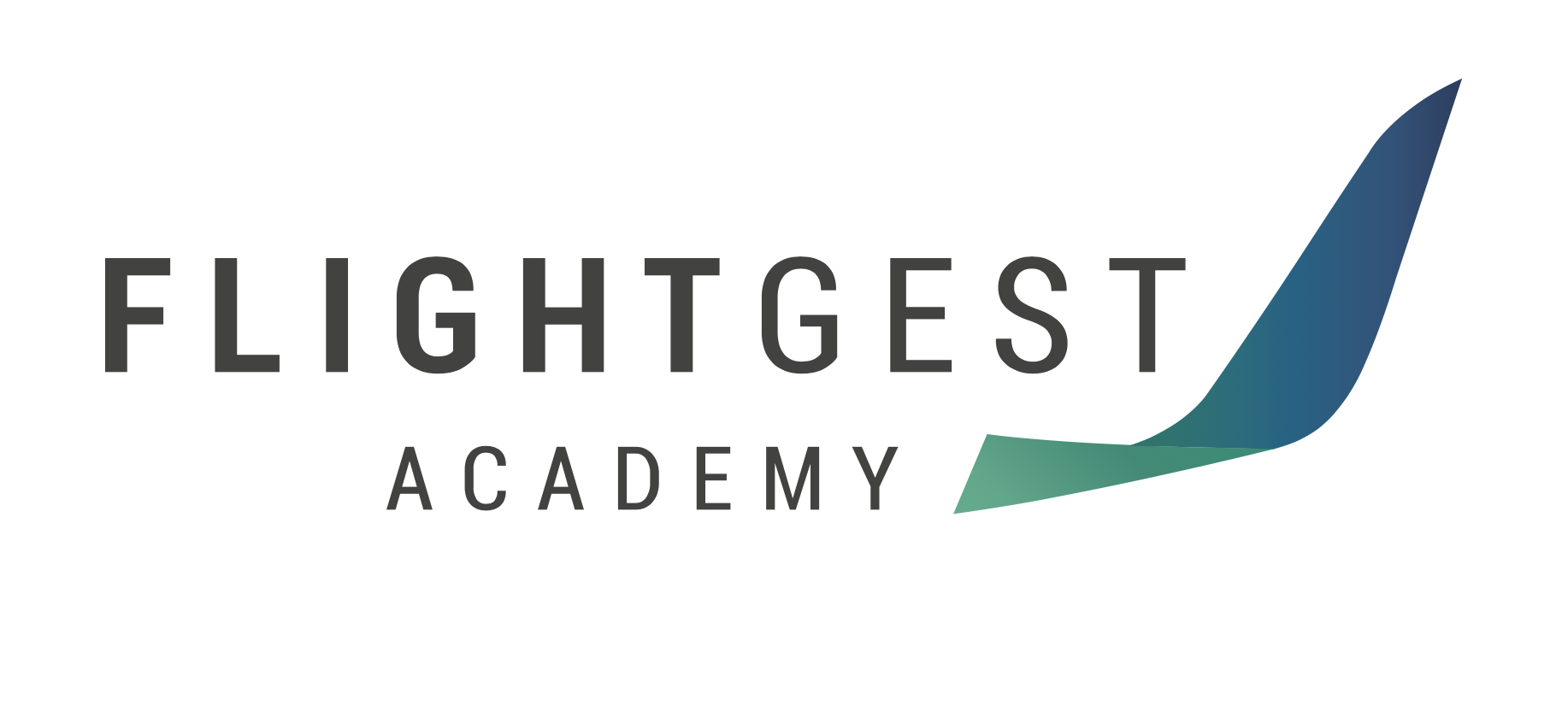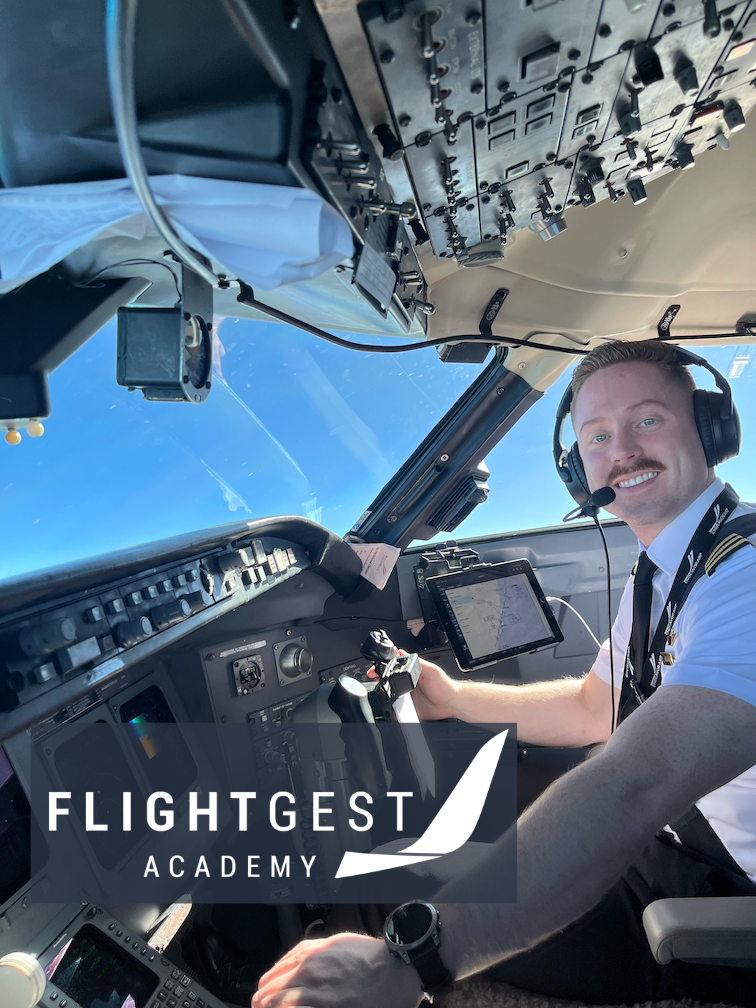
Brandon started his flying career just as the global pandemic was hitting. Brandon told us, “I made the decision to go to flight school near the start of the pandemic. I was getting ready to graduate from LSU and had already been accepted to law school. When the pandemic happened and everything was shutting down, I knew that law school attendance would be done remotely that first year. So I thought, you know, I think I have an opportunity here to do something that interests me, and it wouldn’t be the end of the world to put law school on hold for a year.”
Brandon continued, “Before I shared the idea with my parents, I did my research, and I had a game plan. I knew how I was going to finance it, what my plan was, and how long it was going to take. When I presented it, my parents were like, we think this is a really reckless decision, but obviously, you've thought about it a lot, and because of that we're going to support it. Now they're thrilled. They love it.”
Brandon completed flight school in only 9 months, earning his Commercial Pilot’s License and becoming a Certified Flight Instructor. We asked Brandon what it felt like the first time he took a student up as their instructor. “It's humbling. You have all these certificates and ratings. At that point, I had passed seven check rides with the FAA. And it feels good, you know. You did it! But then you realize that memorizing something or learning something for an exam and only ever flying with your flight instructor or an examiner isn’t real life. And suddenly, you're with a student who doesn't know anything, and you're now the last line of defense for anything going wrong. It’s humbling. It’s a career where you never stop learning, and you never stop growing as a person and as a pilot.”

Brandon Miguez, pilot for Endeavor Air, seated in the cockpit of a CRJ 900
Brandon, age 26, is now a commercial pilot for Endeavor Air and the Director of Flight Operations for FlightGest Academy. He spent two years as a flight instructor with FlightGest Academy before becoming a commercial pilot with Endeavor Air. He recently returned to FlightGest as Director of Flight Operations, where he’s working hard to constantly improve the student experience and ensure flight operations run smoothly.
When asked what sets FlightGest Academy apart, Bandon replied, “It’s the diversity of our student body. We have a lot of students from different backgrounds. While other schools tend to cater to a specific type of student, a career track student, for example, FlightGest Academy has not done that. We may have a military pilot who has flown rotorcraft helicopters their entire life in the Army National Guard, and they're ready to convert their certificates to the civilian world. We're here to help them do that and go to the airlines. The student in high school, college, or late in life wants to make a career change and go to the airlines; we're here to help them do that. Someone who wants to fly recreationally or owns their own aircraft and has no interest in the professional world. We're here for them as well. And so, what ends up happening is we cultivate instructors with a wide range of skills and ability to handle all types of students. From a flight training perspective, I think that's what we do exceptionally well.”
WhirLocal had the opportunity to sit down with Brandon and learn more about his background and his journey to becoming a commercial pilot and Director of Flight Operations.
Q&A with Brandon Miguez, Director of Flight Operations for FlightGest Academy
Q: How would a friend describe you if they were introducing you at a party?
They would probably describe me as someone who doesn't allow much time to be at that party in the first place. I tend to dive into the work I'm doing right now. I'm with Endeavor Air, and I'm here at FlightGest Academy, and I don't take any days off during the week. When I have an objective or goal in mind for my work, that's my primary focus until I'm done with those tasks. I'm very organized, and I like to be methodical in attacking my to-do lists, but I find that I can't relax if I don't get my to-do list done.
Q: Do you have a recent or favorite book?
Yes, actually. One of my most recent favorites is Cerci by Madeline Miller, which ended up on the New York Times Bestseller list. It's a retelling of The Odyssey from the perspective of Cerci. I can get into it and enjoy it because it's unrelated to aviation. That's a hard rule for me: my reading can't be related to planes and flying.
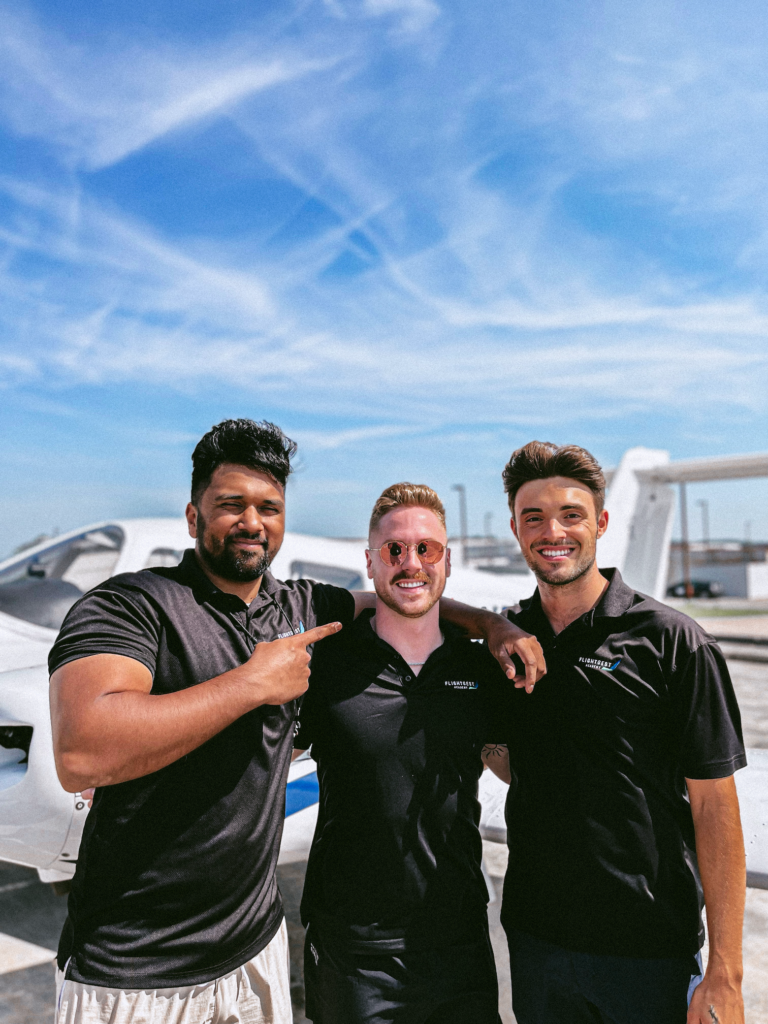
Brandon Miguez, Director of Flight Operations for FlightGest Academy in Raleigh, NC
Q: What’s one thing on your bucket list and why?
A big thing on my bucket list right now is my seaplane rating. All of my experience has been in land-based aircraft. And the only thing that's different about physically flying seaplanes is the landing. Operationally, however, it’s just a very different thing to care for those aircraft being on the water, especially salt water. The care and just the practice of seaplane flying of course, it's not practical anymore, so seaplane pilots are pilots who care about doing it for fun or interest. It’s a niche where there are few career-based pilots, so it’s really interesting to me. Yeah, I want to get my seaplane rating.
Q: Before becoming a pilot, what was your career path?
I was pre-law at LSU and on the mock trial team, participating in mock trial competitions. I had Law as my interest, and that's what I kind of pushed myself into. As I was researching and asking myself what kind of law I wanted to get into, I thought aviation law was really interesting. First of all, because it's kind of starting to branch into space law, and it's very new. Also, there are a lot of international issues that come into play with airspace, especially when incidents and accidents occur. When that happens, it becomes a question of who has regulatory authority over planes flying from country A to country B and issues like that.
At some point, I realized I was more interested in airplanes than the law. I got accepted to law school at LSU, but I never went. I decided to go to flight school instead. Initially, my parents were devastated but they came around quickly.
Q: What was it like the first time you climbed into the cockpit?
The first time was a discovery flight in Tampa. And the thing that really struck me, the thing I remember, is when we took the runway, and the instructor pushed the throttle forward. I felt acceleration like I had never felt before. In hindsight, now flying planes like I have, it doesn't feel fast at all. But to a new student who's not used to that level of sensory input, it’s a very new and fast feeling.
Q: What was it like going through flight school?
Having university experience, I always tell people that flight school is 1000 times harder than any college degree. It's about the pace and the sheer level of information that you have to retain in a short period of time. It's not that any of it is necessarily super complex for the average person to understand. It’s the amount of workload and how you have to manage consuming the information at a pace that works for you and retaining it in a way that works for you. if you already have study habits and routines that help you learn, you’ll be ahead of the curve. If not, be prepared; the flight training environment will be a big adjustment.
Q: What studying techniques worked for you?
I’m a visual learner. It helps me to draw things out. If I was learning about airspace, I would have a note card and draw what the airspace looked like to me or how the airflow moves over a propeller. And I love to read, so if I read the source material, I can retain that. But a lot of people are writers, which means they have to write notes in order to retain the information.
Whatever works for you in any other learning environment, flight training is no different. It's just the information that you're learning that is different. One thing that was striking to me is that in flight training, unlike many other studies, and much like the medical profession or emergency responders, what you're learning is critical for safety and for your life later down the road. For that reason, it becomes super important to learn it well.
Q: Now you're a commercial pilot. Tell us a little bit about that. What are you flying? Who are you flying for?
I fly the CRJ 900 for Endeavor Air, which is a wholly-owned subsidiary of Delta Airlines. I’m based out of LaGuardia and Kennedy. That means when I report to New York City, I can be asked to show up at either LaGuardia or John F. Kennedy airport, depending on the trip assignment. I really enjoy being based out of New York because the commute from Raleigh is so easy, and Endeavor is one of the primary airlines that services RDU. They operate about 8 flights a day between RDU and LaGuardia or JFK, and the flight is about an hour and five minutes, wheels up to wheels down. So yesterday, for example, I woke up at 4:00 AM in Manhattan, caught a plane to Raleigh, and showed up for the regular workday here at FlightGest Academy.
Q: Since you started working for the airlines, what’s been the most surprising thing?
The most surprising thing is that there's not a large skill gap between the senior instructors here at FlightGest Academy and the junior first officers at an airline. Really, it's a three-month training process to get typed on an aircraft. A lot of that is ground school, just learning procedurally how your company operates, company-specific procedures that you have to follow, and then learning the aircraft. And there are at least 12 simulator lessons where they teach you how to operate the aircraft. Each simulator lesson is about four hours, so they're quite in-depth.
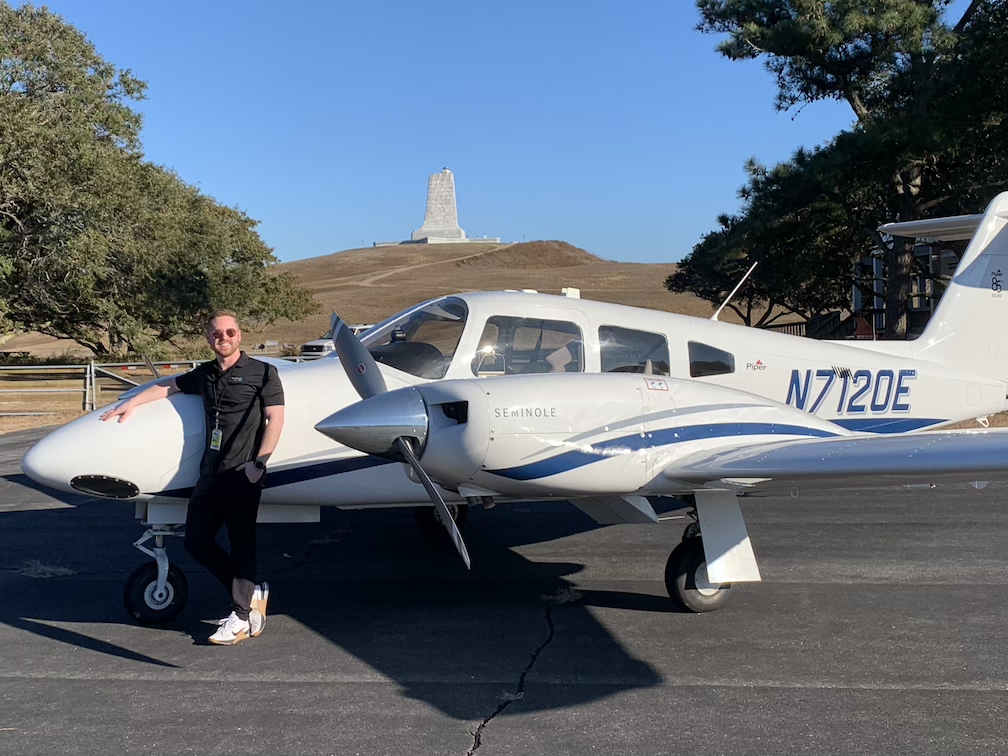
FlightGest Academy owner Ron Kuist with wife Amy and daugher Piper
Once you realize that flying is flying, and it's just about learning the nuances of a particular make and model of aircraft, it becomes a lot easier later on in your career to adapt to different aircraft types. Your first jet is always the hardest. This was my first jet. And the CRJ is also known for lacking automation compared to other airplanes. Airbus, for instance, is going to have a lot more automation. The Embraer 175, for instance, has autothrottles, so you can set a speed, and it will adjust the throttles by itself to maintain speed. In the CRJ, we're pulling the throttles forward and back ourselves. On a really windy day when we're approaching a landing, it makes our job more task-saturated in those critical moments of flight.
I liked that the CRJ challenged me. It was surprising how it challenged me, but also because of the skills I learned through flight training and, as a flight instructor, how well-equipped I was for the challenge.
Q: Were you nervous the first time in the simulator for the CRJ?
I've heard this phrase probably 15 times since starting at Endeavor. Every instructor says it. Every airline pilot says, “has the water hose been turned on?” Because they equate flight training to drinking from a water hose. And it really does feel like that. I felt like I was drowning a little bit at first with the same kind of sensory overload that I got as a day-one student pilot. And it's like, wow, I thought I had done everything. You know, I instructed, I got all of this experience, and to realize there are still so many new experiences for me out there. To me, that makes this career pretty exciting. There are new things to learn at every stage.
Q: What's been the most satisfying thing about being a commercial pilot with the airlines?
The most satisfying thing is when you handle a difficult flying environment. Two weeks ago, for example, we had all these crazy winds hit Raleigh. The same storm system went through Kennedy. We were operating a flight from Savannah, GA to Kennedy. We didn’t fly through the heart of this storm, but we had to navigate around cells, up and down, to avoid severe turbulence. We're coming into Kennedy, and we have a pretty nasty encounter with wind shear, which is just the gusting and changing of wind direction and speed. That makes it really hard for your aircraft to maintain a stable approach and a constant airspeed.
Remember how I mentioned the throttles earlier? We're having to rip the throttles forward and backward to keep our airspeed within our margin of performance. And at the end, we get pretty close to the ground, and we get a wind shear caution, and then warning, which tells us a lack of performance is happening, we're losing a lot of airspeed. And it’s not because we did anything wrong. The environment is creating a situation where it's not safe to land.
Instead of landing, we had to go around. We operated within company procedure and did what we were supposed to do. And finally, when we landed, all the passengers were disembarking, and they were thanking us up and down, “Thank you for getting us here. We're so glad we made it.” And in my mind, I realized our safety was never in doubt. Those passengers did not get close to imminent danger, even though it was a scary experience for them.
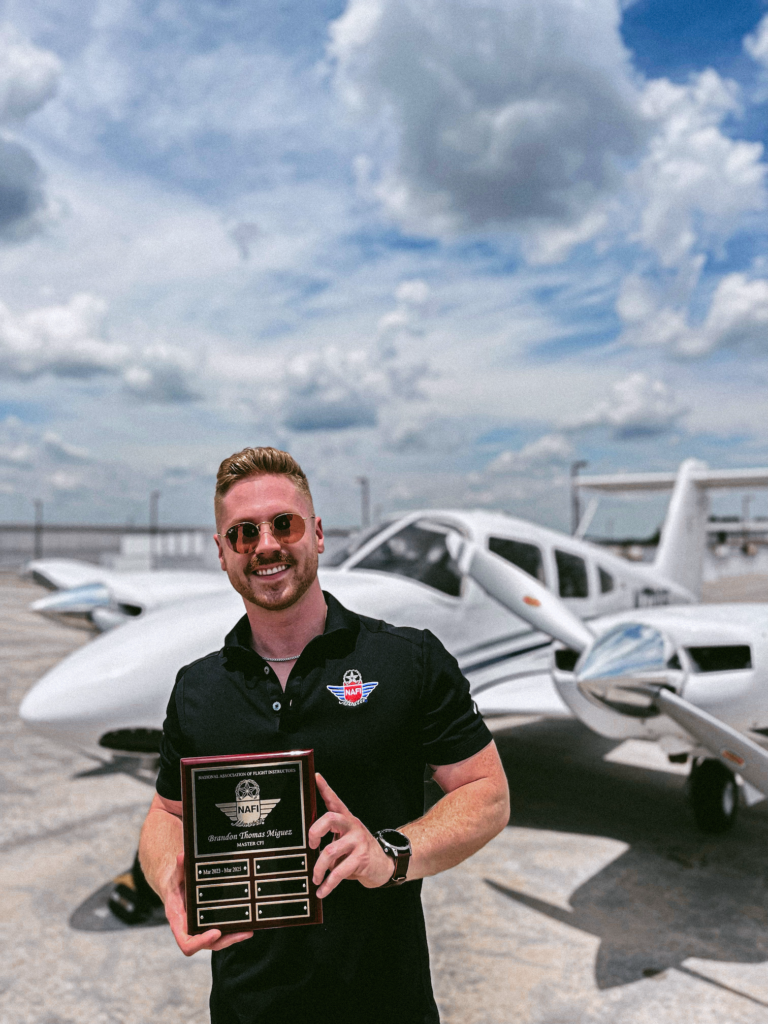
FlightGest Academy owner Ron Kuist with wife Amy and daugher Piper
The experience gave me real respect for the model the FAA and the airlines have built, where there's such a margin of safety. We get to show up daily and get so many people where they need to go without jeopardizing their safety. That's something I greatly respect, and I think I enjoy the most - watching us get so many people where they need to go safely.
Q: Any advice for those coming up behind you?
Never get discouraged with how much work is ahead of you. It's a lot. And you can't think too far into the future about all the things that are required of you. Focus on the task in front of you. Learn it and perform that task to the best of your ability, and give yourself the grace to make mistakes while you do it. We're all going to make mistakes. Maintain your focus so you're attacking what's in front of you, and ultimately, you’ll achieve the end goal.
Q: What’s your role here at FlightGest Academy, and what are some of the things you’re working on?
I came back to FlightGest Academy in the capacity of Director of Flight Operations. While other personnel here are more involved with managing flight instructors or the student body, I focus on the policies and procedures we're operating by. So, the things that will most affect safety or create a standardized student experience here at the school. These are things that are bigger-picture and affect the entire academy and how we operate. ‘How can we constantly improve?’ That's really important for FlightGest Academy to ask itself, and that’s what I’m focusing on.
Brandon Miguez: Seizing Opportunity and Following a Dream
Brandon Miguez's story is a testament to the power of pursuing one's passion and seizing opportunities despite uncertainty. His decision to veer from a path set for law school and venture into the world of aviation amidst a global pandemic showcases his resilience and determination. From completing flight school in just nine months, becoming a commercial pilot for the airlines, and assuming the role of Director of Flight Operations at FlightGest Academy, Brandon's journey exemplifies the importance of following one's dreams and embracing new challenges with an unwavering spirit.
As Brandon continues to excel in his career as a commercial pilot for Endeavor Air and contributes to the enhancement of flight operations at FlightGest Academy, his story serves as an inspiration to aspiring aviators and professionals alike. With a steadfast commitment to excellence and continuous improvement, Brandon embodies the ethos of perseverance and dedication, reminding us that the sky is not the limit but rather the beginning of endless possibilities.
